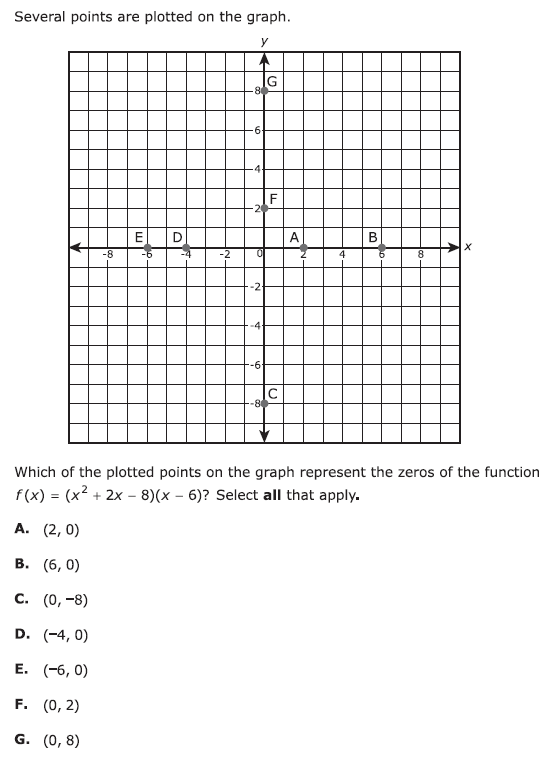|
"Zeros" of a function are the x-intercepts of the graph, also known as "roots" or "solutions".
The x-intercepts shown in the graph are (-6,0) , (-4,0) , (2,0), and (6,0). However, not all are zeros of the function. To solve the function, set f(x) equal to 0, and solve for x. f(x) = (x² + 2x - 8)(x - 6) (x² + 2x - 8)(x - 6) = 0 {set f(x) equal to 0} (x + 4)(x - 2)(x - 6) = 0 {factored the quadratic trinomial into two binomials} x + 4 = 0 or x - 2 = 0 or x - 6 = 0 {set each factor equal to 0} x = -4 or x = 2 or x = 6 {solved each equation for x} The zeros are (-4,0) , (2,0) , and (6,0) A. , B., and D Ask Algebra House Comments are closed.
|
Latest Videos
Algebra 1 State Test Practice Archives
November 2023
|



